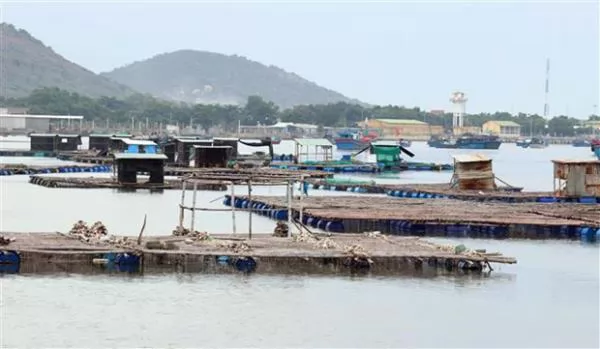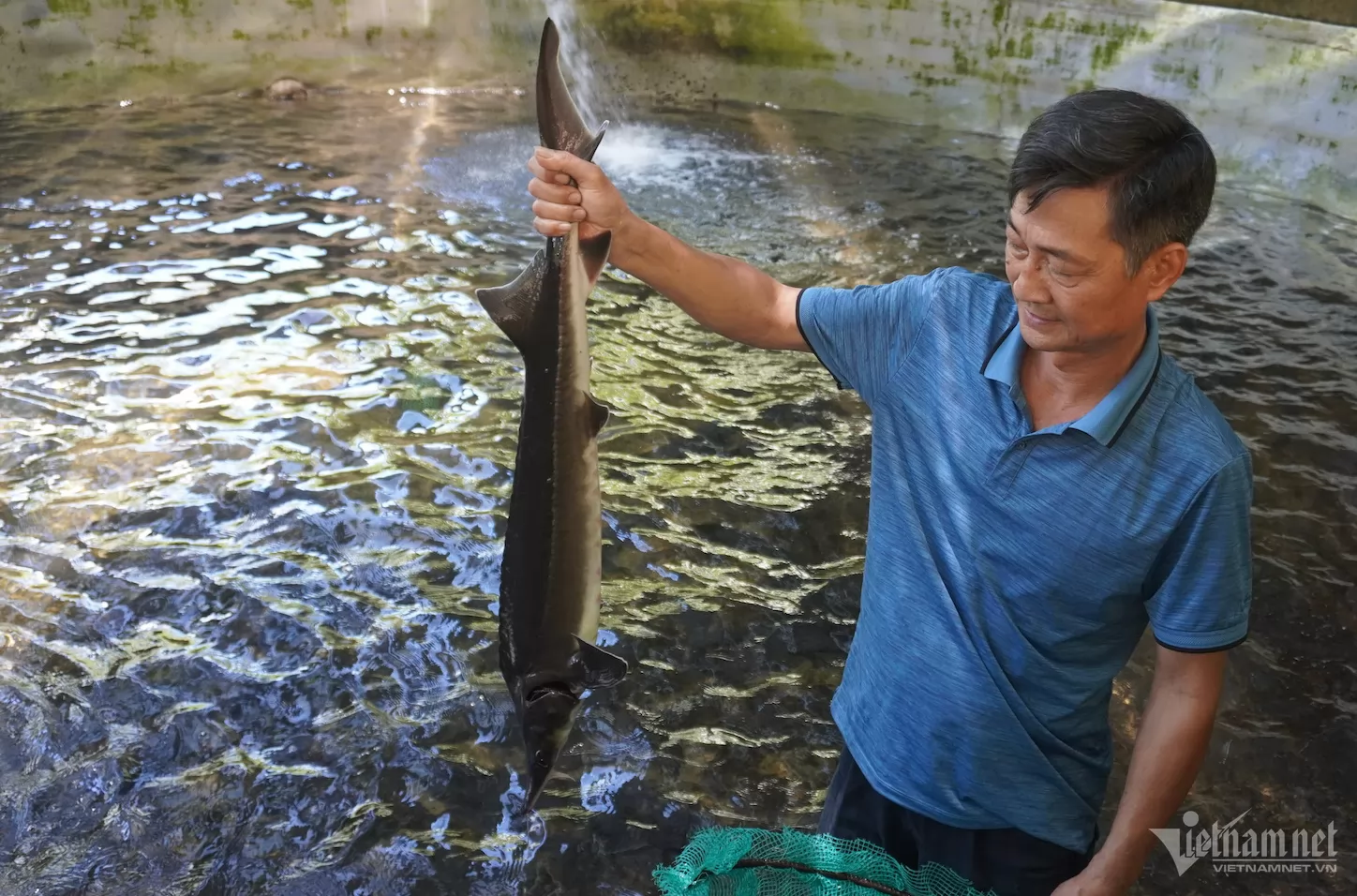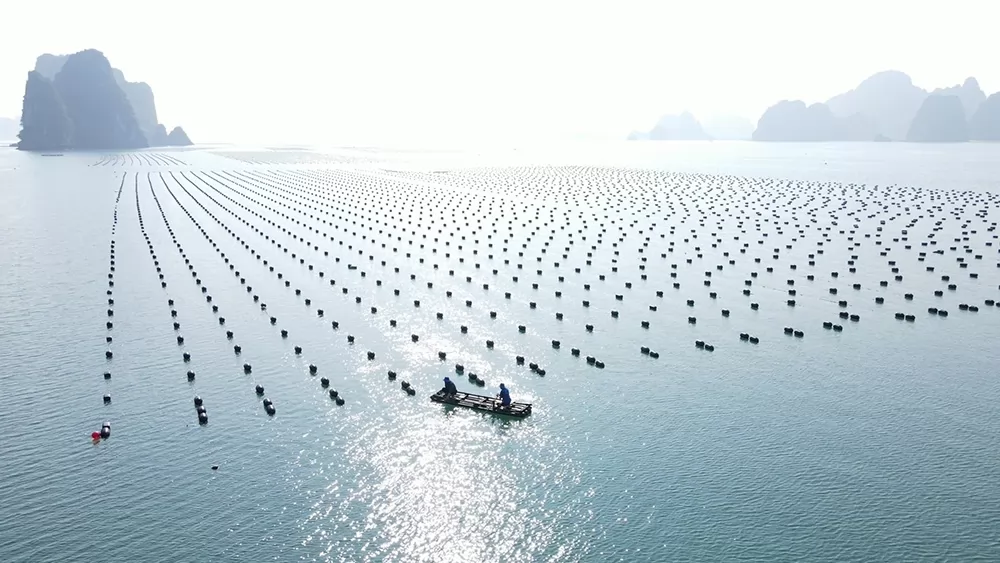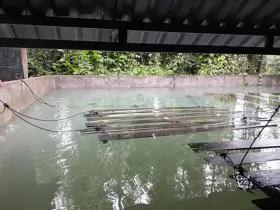Ninh Thuận improves marine aquaculture efficiency

Floating cages for breeding shrimp in Ninh Thuận Province's Ninh Hải District. — VNA/VNS Photo Công Thử
NINH THUẬN — The south-central province of Ninh Thuận plans to expand marine aquaculture models that are efficient and provide high incomes to farmers, according to its Fisheries Sub-department.
It will also expand the processing of ocean catches.
The aim is to develop marine aquaculture into a major pillar of its fisheries sector.
Đặng Văn Tín, head of the sub-department, said the province would expand breeding of high-value marine species like cobia, grouper, pomfret, oysters, and lobsters this year.
It would take advantage of its 106km coastline and large numbers of bays and lagoons for the purpose, he said.
It targets aquaculture output of 9,500 tonnes this year, he said.
To achieve the target, the sub-department and localities will instruct farmers to carry out aquaculture in zoned areas in seas and reorganise production to develop value chains.
The province will step up research into and commercial production of feedstock.
It will strictly regulate fishing to protect marine stocks and ensure sustainable development.
It will encourage farmers to switch from traditional floating cages near shore to modern offshore cages for aquaculture.
It encourages farmers to use advanced technologies for marine aquaculture such as using high-density polyethylene (HDPE) floating cages based on Norwegian methods.
HDPE floating cages are more resistant to winds, waves and storms than traditional wooden floating cages.
Relevant agencies will teach farmers advanced techniques for marine aquaculture based on organic and biological standards to safeguard the environment and fisheries resources.
They will regularly monitor for diseases to instruct farmers in preventive measures.
The province will solicit investment in infrastructure for marine aquaculture.
Farmers in the coastal Ninh Hải and Thuận Nam districts and Phan Rang – Tháp Chàm City, where marine aquaculture is a major occupation, breed various species in floating cages and ponds.
They do so mostly near shore since they use traditional techniques and wooden cages which cannot resist strong winds and waves.
Last year the province had more than 1,000 fish cages with an output of 560 tonnes, 403 oyster floating cages with an output of 1,200 tonnes and 2,642 lobster floating cages with an output of 80 tonnes.
Tropical rock lobsters and scalloped spiny lobsters are two major varieties bred in the province, with the former fetching farmers VNĐ1.2–2.1 million (US$53-93) a kilogramme and the latter, VNĐ550,000-630,000 ($24-28). — VNS
Maybe you are interested

Farmers earn high incomes from breeding soft-shell turtles in cement tanks
A new way of breeding soft-shell turtles in cement tanks has offered high incomes for farmers in Xuyên Mộc District in the southern province of Bà Rịa - Vũng Tàu.

Northern farmers raise sturgeon for high profits
Sturgeon spawn is considered food for the rich with the selling price of VND40 million per kilogram. Vietnamese farmers are raising sturgeon in many mountainous areas and collecting 3 tons of spawn each year.

Vietnam's seafood industry achieves sustainable growth: Today's position, tomorrow's aspiration
Vietnam has become one of the world's top three seafood exporters, affirming its role as a key economic sector while opening up expectations for sustainable development and deeper international integration.





